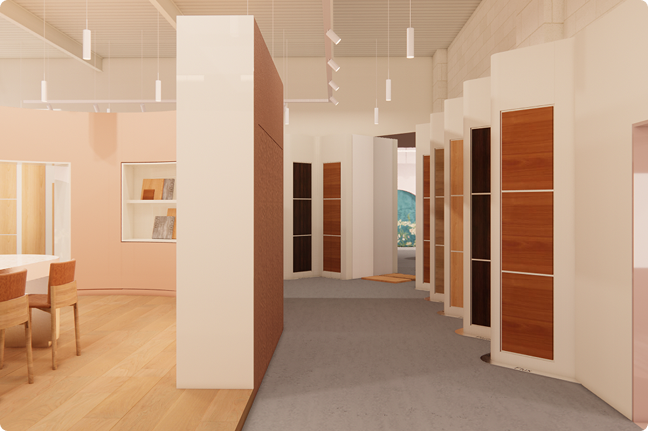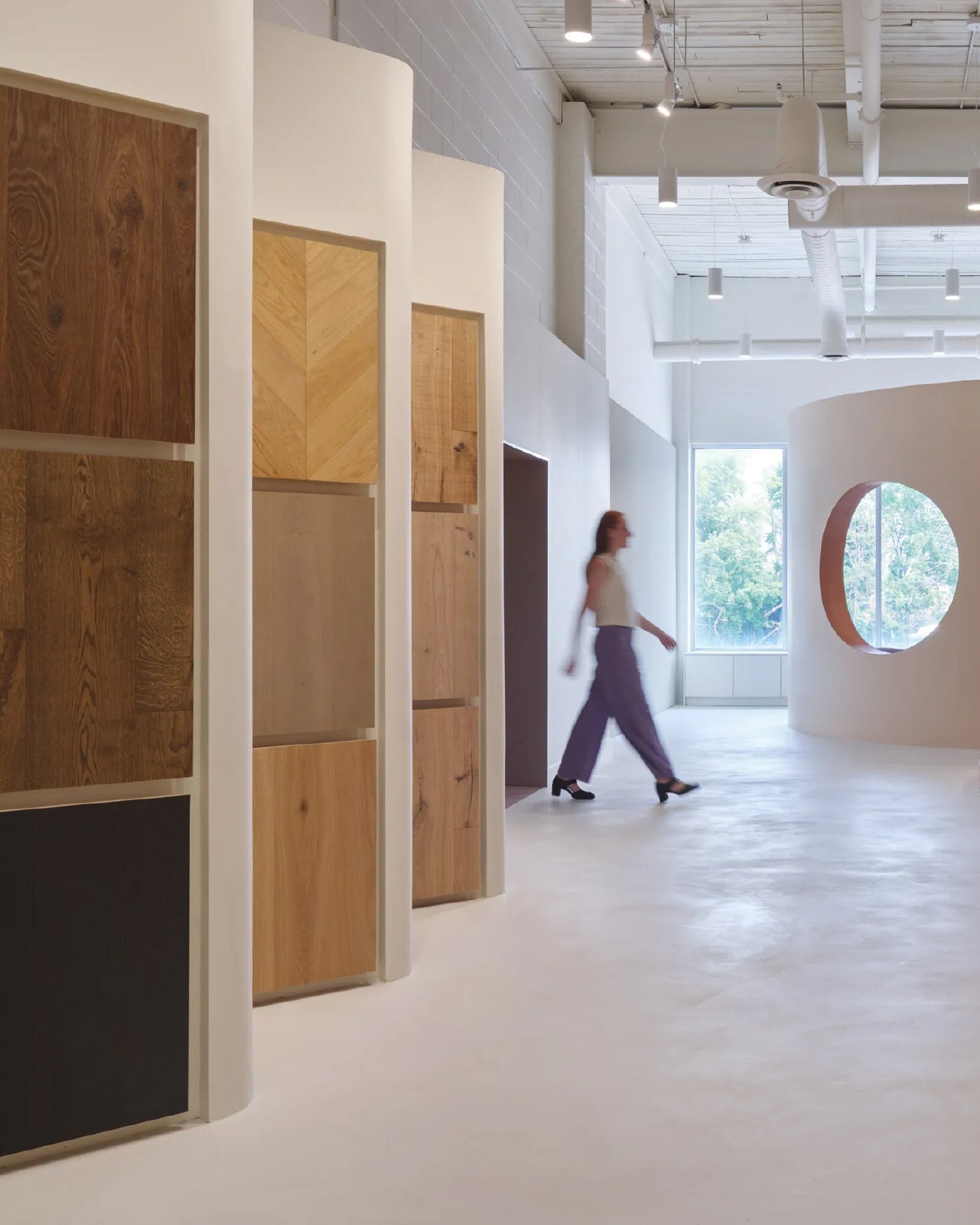Uncover seven surprising facts about wood that reveal how your floor shapes and lives with you over time.
July 10, 2025
Built to last: how to choose a floor that stands the test of time.
A wood floor isn’t just something you walk on. It’s something you live with, for years, even decades. That’s why the initial decisions about tone, texture, and dimensions matter far beyond installation day. Every plank carries a future: how it reflects light, how it wears underfoot, how it shapes the atmosphere of a room.
Here’s what to consider if you want your floor to grow better with time and align with the life you build around it.
[01] Color isn’t fixed, and that’s the beauty of it.
Wood changes. It evolves. Light, time, and everyday life leave their mark. Instead of thinking of your floor as a single shade, picture it as a shifting spectrum that adapts to your space. Warm, natural tones soften minimal interiors and bring depth to classic rooms. Cool tones like greys feel inherently modern, especially when paired with texture or clean lines.
[02] Variation brings a floor to life.
Unless you go for a fully opaque finish, color variation is a core part of wood. It’s what gives it soul. Some treatments like smoking enhance variation, while others mute it. Wood species and grading also affect how much natural diversity you’ll see. A floor with tonal shifts not only feels more authentic but can subtly unify the colors in a space.
[03] Grading: the fingerprints of nature.
Grading refers to how much of the wood’s natural features like knots, sapwood, and movement are visible. A clean grade shows fewer imperfections, resulting in a more uniform look. Rustic grades highlight natural character with more knots, more history, more storytelling. Choosing your grade is about choosing how much nature you want to show.
[04] Texture: what your eyes and feet both notice.
Texture is a quiet yet powerful design tool. It affects how light plays on the surface, how the floor appears, and how it feels underfoot. Brushed or sanded finishes enhance the grain. Hand-planing adds warmth and irregularity. Distressed finishes help disguise wear over time. Texture isn’t just visual; it’s tactile memory.
[05] Dimension shapes the room.
Plank size influences how a space feels. Wide boards bring calm and continuity with fewer lines breaking up the surface. Narrow planks introduce rhythm and energy. Long lengths increase flow. Consider your room’s proportions, natural sightlines, and whether you want the floor to support the space or command attention.
[06] Gloss sets the mood.
Gloss determines how much light bounces off your floor. High-gloss finishes create a sleek, reflective surface, but they also highlight every speck and scuff. Low-gloss or matte finishes absorb light and reveal the true tone of the wood. They’re ideal for bright, natural spaces where you want a softer, more lived-in look.
[07] Choose like it’s forever, because it is.
The best floors aren’t just picked. They’re touched. Lived with. Observed in daylight and dusk. Take your time. Don’t rush through samples. Walk on them. Because when the choice is right, your floor doesn’t just last, it evolves with you.
A good wood floor doesn’t just hold up: it holds memory. Scratches become part of your daily rhythm, sunlight etches slow gradients into the grain, seasons pass and the floor stays. When chosen well, it doesn’t demand attention, but it anchors your space. So consider the wood as you would any other long-term relationship: with thought, care, and a little imagination. Because it won’t just be there: it’ll become part of the way you live.







